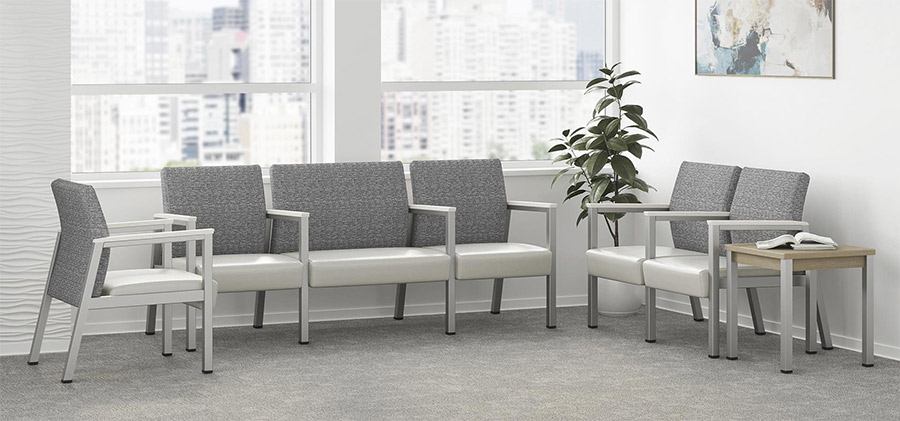How Flexible Furniture Design Improves Patient Experience
“Flexible design.” This phrase is tossed around a fair amount when it comes to furniture selection in healthcare facilities – but what does it really mean?
Flexible design refers to the adaptability, comfort, and versatility that a piece of furniture provides in a space. These qualities are particularly important in healthcare. For patient exam room furniture, for example, the right furniture can aid the medical staff in administering the spectrum of examinations they have to be able to perform in the room. It can also offer a level of comfort that patients might not have experienced otherwise in that hospital setting.

Clearly, furniture with these flexible characteristics helps both healthcare providers and patients alike. Continue reading below to learn more about these traits and how to leverage them in a healthcare setting.
Adaptability
Adaptability is one of the most important traits of any aspect of healthcare. It’s a fast-paced, high-pressure environment with high stakes – and everything in the facility should be designed to account for this, including the furniture.
This doesn’t just refer to adaptability when it comes to patient care. In fact, healthcare facilities undergo near-constant changes technologically, medically, and operationally. In the thick of these perpetual changes, there is so much value in the few things that remain constant and reliable. This is a service that flexible furniture provides. Intentional furniture selection not only aids healthcare staff and incoming patients amidst a changing workflow, it also helps to future-proof the functionality of the physical space.
Comfort
Flexible furniture design also promotes calm spaces and helps patients to be as comfortable as possible. This is important because patient comfort directly impacts the care and satisfaction that a patient feels.
Healthcare facilities are already places of heightened anxiety and increased levels of discomfort. While these feelings could be seen as inevitable, it’s also crucial to note that they’re detrimental to the overall treatment and recovery of the patient. With the right furniture in the space, these negative feelings can be mitigated and turned into security, aiding the patient in achieving a fuller and swifter recovery.
Additionally, patient comfort can lead to its own collateral benefits such as increased provider communication. When a patient is comfortable, they’re more open to understanding and trusting their provider. That being said, intentional furniture selection can achieve a range of positive impacts from increased cooperation to a tangibly improved recovery.
Versatility
Patients can come to the hospital for a variety of reasons. Their rooms are therefore designed with versatility in mind, and the furniture should be as well.
When every aspect of the facility is selected with versatility in mind, providers are able to run at optimal efficiency. Hopping from patient to patient, executing exams and treatments, and navigating emergency events are all made easier with intentional furniture flexibility, in addition to taking less time overall.
Further, versatile furniture allows healthcare facilities to provide the most comfort to any patient, whether they’re sick, immobile, or in need of other support. When a patient is able to relax in a space that accommodates them, the quality of their treatment has already improved significantly.
At Thentic, we work with a variety of manufacturers to provide furniture that creates warm, supportive, and comforting spaces across many settings. We truly care about the functionality and flexibility of furniture in the healthcare industry – so much so that we’d love to support you in your next project!
If you’re ready to start conceptualizing or selecting furniture for your healthcare facility, please get in touch. Thentic will provide all the necessary samples, education, training, and project management needed to make your vision come to life.